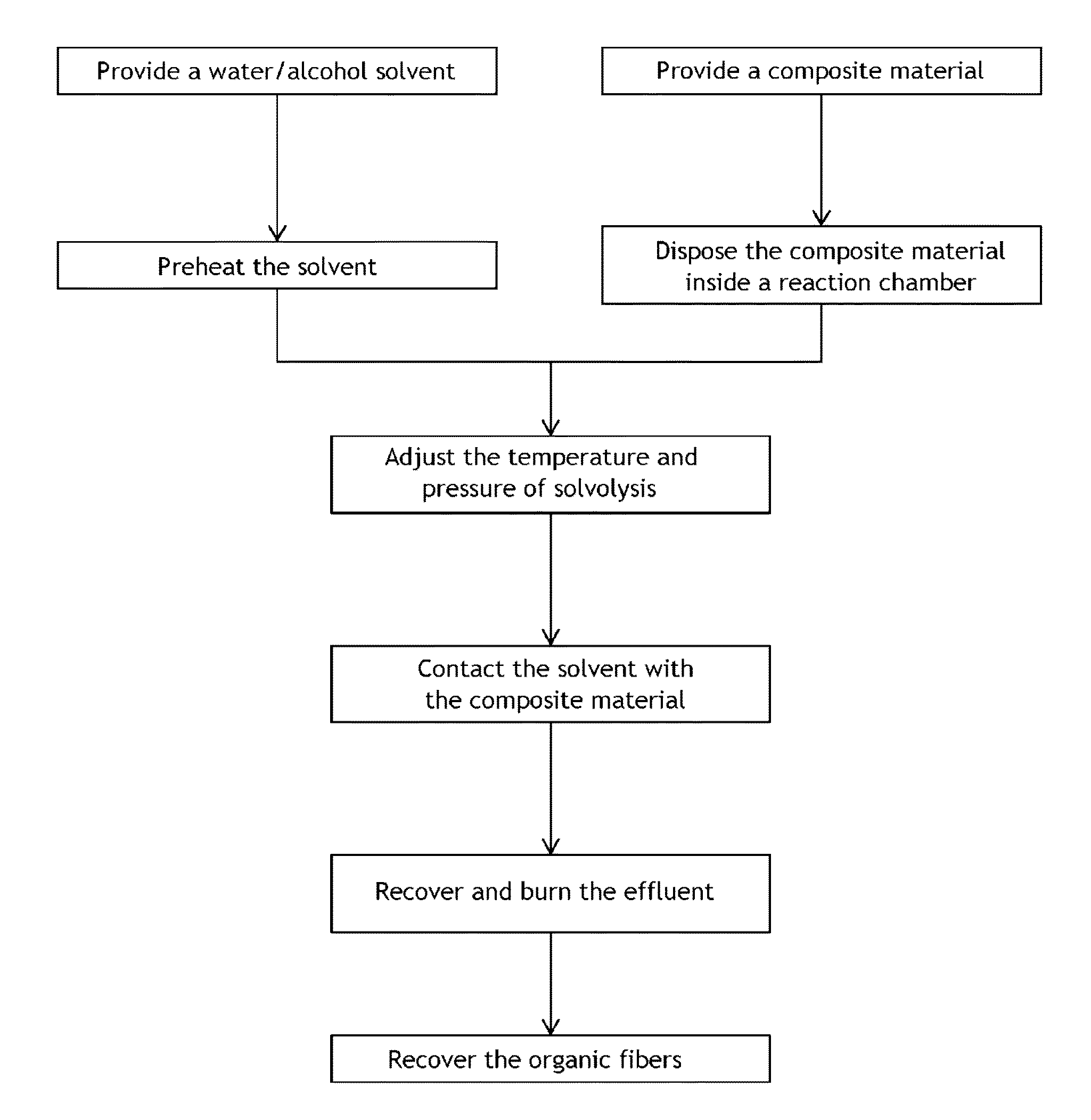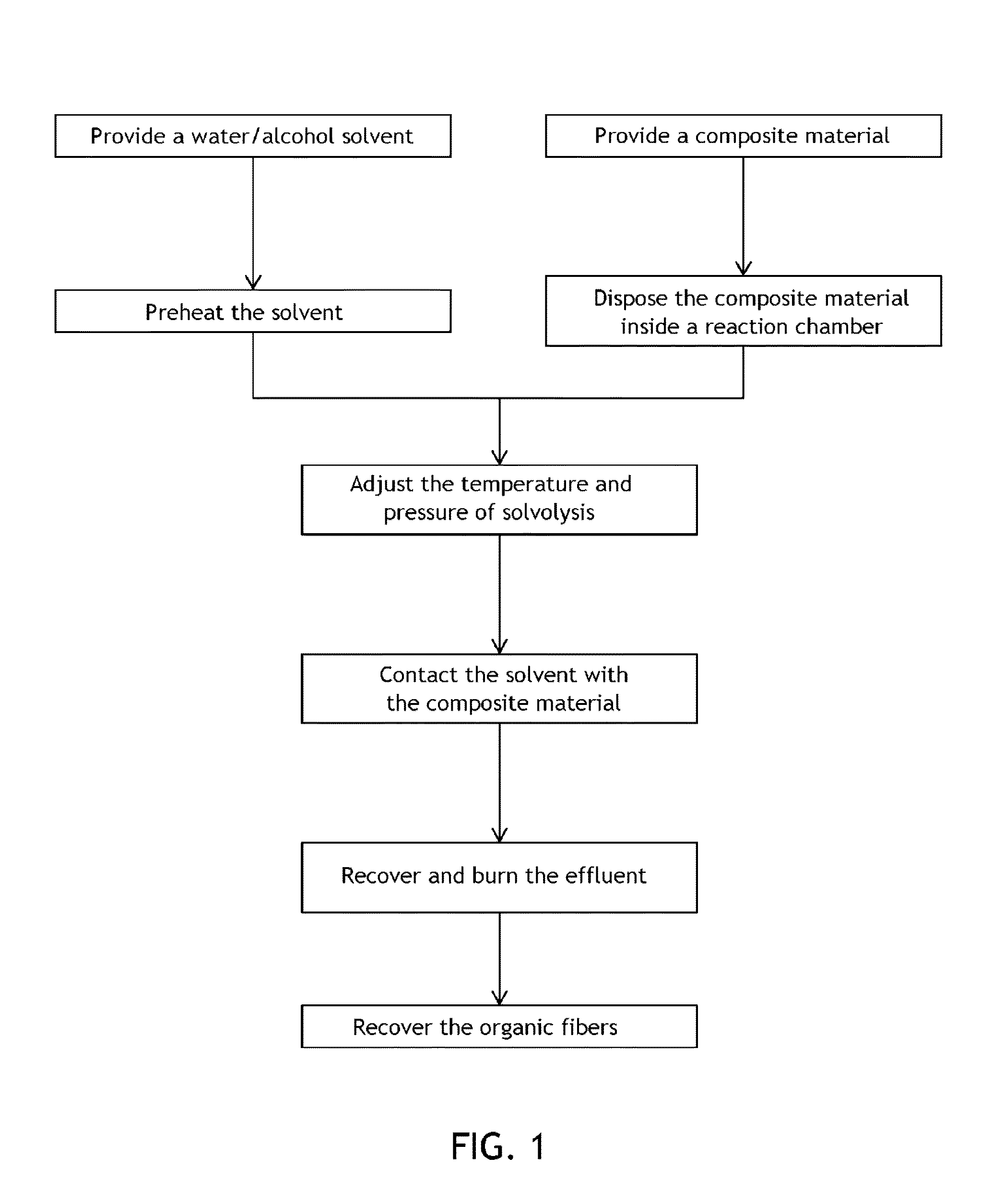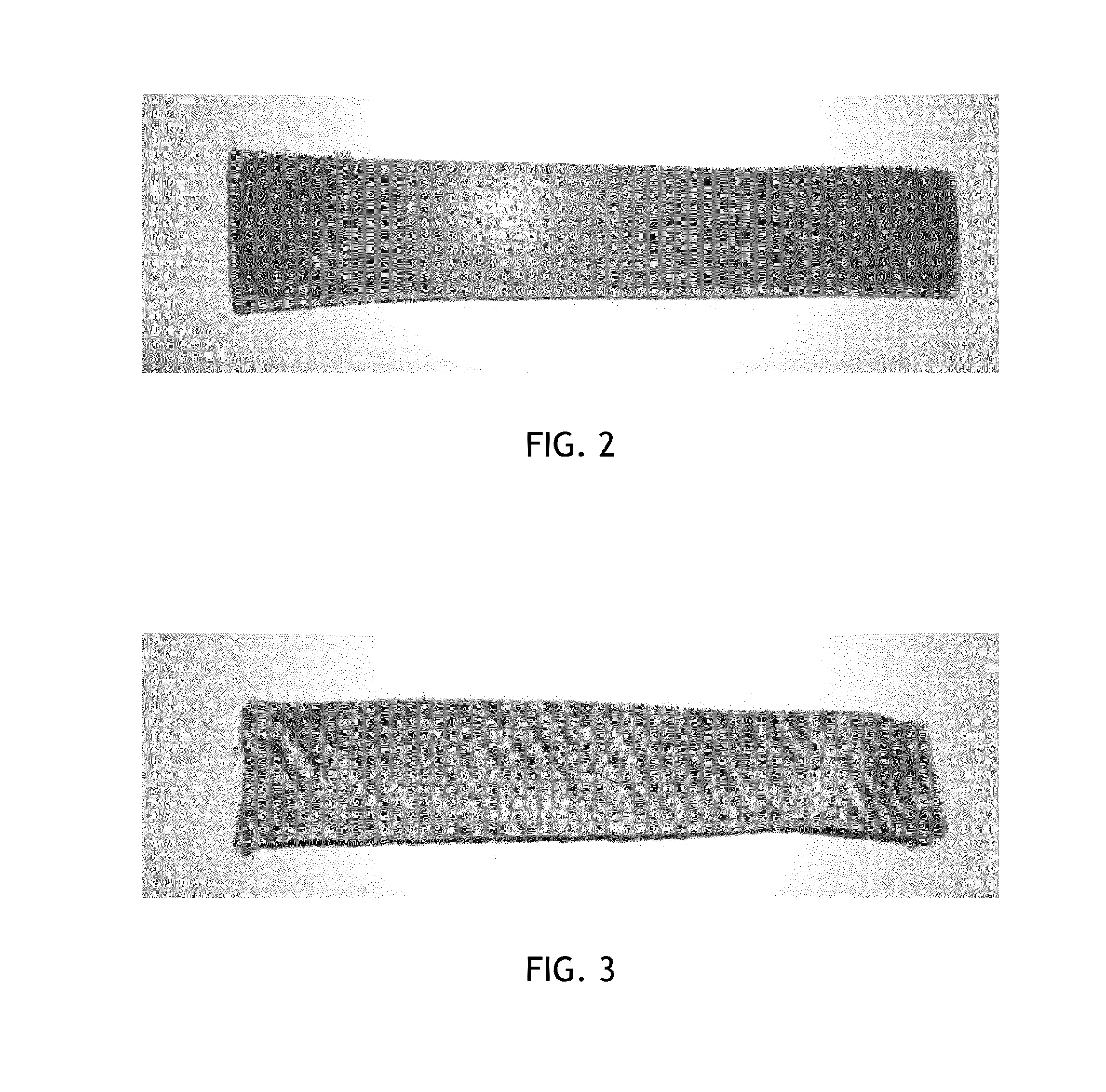Method for recovering organic fibers from a composite material
a composite material and organic fiber technology, applied in the field of organic fiber recovery from organic fiber/polymermatrix composite materials, can solve the problems of high cost of storage, difficult to separate composite materials without destruction, and difficult to recycle waste from these composite materials
- Summary
- Abstract
- Description
- Claims
- Application Information
AI Technical Summary
Benefits of technology
Problems solved by technology
Method used
Image
Examples
example 2
Flax Fibers
[0081]A composite material consisting of about 40% by volume flax fibers and 60% by volume polymer matrix in polylactic acid was cut into generally rectangular specimens as shown in FIG. 2. In this FIG. 2, the flax fibers can be seen to be embedded in the polymer matrix.
[0082]This material is then placed in a reactor and contacted with a solvent consisting of a mixture of water and ethanol in a 50:50 volume ratio and preheated to 175° C. The solvolysis is carried out at 175° C. and 250 bar for 30 minutes. These conditions correspond to the homogeneous subcritical region of the solvent.
[0083]FIG. 3 shows what remains of the composite material at the end of the solvolysis. The polymer matrix was completely decomposed and the flax fibers remained intact.
PUM
| Property | Measurement | Unit |
|---|---|---|
| Temperature | aaaaa | aaaaa |
| Temperature | aaaaa | aaaaa |
| Pressure | aaaaa | aaaaa |
Abstract
Description
Claims
Application Information
 Login to View More
Login to View More - R&D
- Intellectual Property
- Life Sciences
- Materials
- Tech Scout
- Unparalleled Data Quality
- Higher Quality Content
- 60% Fewer Hallucinations
Browse by: Latest US Patents, China's latest patents, Technical Efficacy Thesaurus, Application Domain, Technology Topic, Popular Technical Reports.
© 2025 PatSnap. All rights reserved.Legal|Privacy policy|Modern Slavery Act Transparency Statement|Sitemap|About US| Contact US: help@patsnap.com



